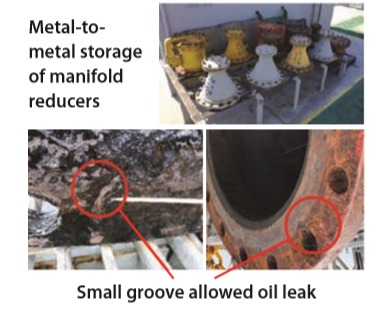202046 Ship-to-ship transfer ends in tragedy
As edited from official Ministry of Transport (Singapore) report MIB/ MAI/CAS.023
A chemical tanker planned to take on stores while underway via a small re-supply boat. The weather was fine with a slight sea and swell and light winds. The Masters of the two vessels had agreed a rendezvous point and to undertake the ship-to-ship transfer operation on a heading of about 305° and at a speed of about four to five knots.
The tanker’s crane would be used to bring the stores on board. The re-supply boat came alongside the tanker and, without any lines attached, the tanker’s crane’s hook was lowered and the first pallet (XX in the diagram) was hooked on and the lift started. As the lift started, the re-supply boat began to veer away from the side of the tanker. The pallet, now partially lifted, was caught by another pallet (YY) on the deck of the re-supply boat.
A crew member ran to the re-supply boat’s wheelhouse to inform the Master to put more helm towards the tanker. The Master said he had done that, and suggested that the sheer was due to the lift coming clear of the boat’s deck. The Master then left the wheelhouse to try and help the deck crew clear the lift. The re-supply boat was still moving away from the tanker and the Master realised they needed to abort the lift.
Before the lift could be lowered to the deck, it came free from the YY pallet, swinging toward the tanker and knocking the Master overboard. Life buoys were thrown to the Master but he was unable to reach any of them. Search and rescue operations were initiated but the Master was not found.
His body was recovered four days later. The investigation found, among other things, that neither the deck crew nor the Master were wearing personal flotation devices, even though the gunwale was only 0.5 metres high meaning there was a considerable risk of falling overboard.

Lessons learned
- The decision to transfer stores while making way at four knots was questionable. It certainly comprised more risks than stopping and allowing the re-supply boat to secure lines fore and aft to the tanker before the lifts began.
- Leaving the wheelhouse unattended to help on deck was another questionable decision. The vessel was underway at four knots and in close proximity to the tanker.
- Working on the deck of the re-supply boat, which had very low gunwales, without personal flotation devices was a clear oversight in risk appreciation – another example of ‘risk in plain sight’.
